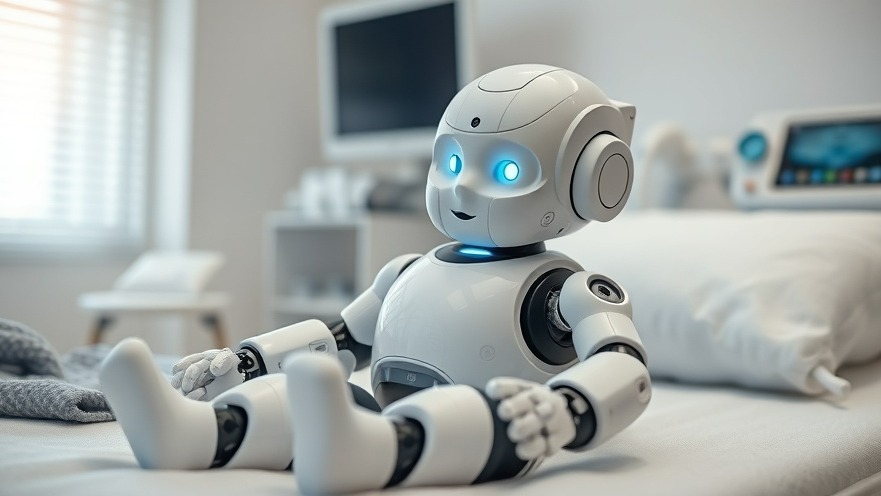
Revolutionizing Pediatric Care: The Birth of BabyBot
In a groundbreaking effort to bridge the gap between robotics and pediatric medicine, researchers from the CREATE Lab, EPFL, and Nestlé Research in Lausanne have introduced BabyBot, a soft robotic infant prototype designed to replicate the feeding behaviors of human babies. This innovative technology stands to transform how medical practitioners approach infant testing and clinical procedures by mimicking the physiological responses and developmental stages of infants in their first six months of life.
How BabyBot Works: Advanced Robotics Meets Human Mimicry
The engineering behind BabyBot integrates pioneering techniques that allow it to imitate not only the feeding patterns of real infants but also their anatomical changes as they grow. Equipped with sensory capabilities in its mouth and oral cavity, BabyBot can recognize different feeding scenarios, including the imitable, yet distressing reactions of gagging and choking. This level of realism provides medical researchers with a unique platform to test new feeding devices without the risks associated with human subjects.
The Importance of Simulation in Pediatric Medicine
Pediatric practitioners often face challenges when it comes to evaluating infant feeding capabilities due to the invasive nature of current testing methods. Traditional approaches—such as simulations, imaging, and observational instruments—have limitations that can affect their accuracy. BabyBot presents a non-invasive alternative that allows for safe and controlled experimentation, ultimately enabling healthcare providers to develop better treatments for infants without endangering their well-being.
Future of Infant care: Enhanced Insights and Improvements
BabyBot's design includes transition phases paralleling real human development; the robot evolves from taking liquids to integrating semi-solid foods as it ages. This adaptability not only reflects the normal growth of infants but also helps in studying their physical and cognitive responses to varied feeding methods. For health practitioners, these insights are valuable as they can enhance the training tools available for caregivers and ensure that best practices in feeding are implemented seamlessly.
Implications for Health Practitioners
For concierge health practitioners, staying ahead of technological trends like BabyBot is crucial for optimizing patient care. As this soft robotic technology evolves, it may reshape patient management strategies, particularly in pediatric care. Being able to simulate and study feeding problems in safe environments could lead to faster diagnosis and tailored interventions. Moreover, practitioners could leverage insights from BabyBot's detailed behavioral analysis to educate parents and caregivers on infant feeding strategies more effectively.
Engaging with Emerging Technologies: An Unfolding Narrative
The burgeoning field of soft robotics is paving the way for immersive healthcare solutions that can lead to unprecedented advancements in patient care. With BabyBot, we see the convergence of robotics, child development, and advanced medical practice—a combination that promises to revolutionize how we understand and manage infant feeding challenges. As medical technology continues to advance, engaging with these innovations will be paramount for health professionals looking to deliver the best possible outcomes for their young patients.
Conclusion: A Call to Embrace the Future
As BabyBot heralds a new era in pediatric healthcare, practitioners are encouraged to stay informed and engaged with these innovations. The insights generated from studying a robotic infant can have profound effects on medical practices, allowing for better-equipped healthcare systems that prioritize safety, education, and patient comfort. By embracing technologies like BabyBot, health practitioners can ensure they are prepared for the evolving landscape of patient care.
 Add Row
Add Row  Add
Add 




Write A Comment